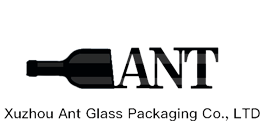Bottle and can glass should have a certain mechanical strength because of the use of different conditions, can also be subjected to different stress. Generally can be divided into internal pressure strength, heat resistant to impact, mechanical impact strength, the strength of container is overturned, vertical load strength, etc.
But lead to broken glass bottles from this perspective, the direct cause is almost mechanical impact, especially through in the process of glass bottles, filling in the transport process caused by multiple scratches and impact. Therefore, glass bottles and cans should be able to withstand the general internal and external stress, vibration, impact encountered in the process of filling, storage and transportation. The strength of bottle and can glass differs slightly according to inflatable bottle and non-inflatable bottle, disposable bottle and recycled bottle, but must ensure the use of safety, do not burst.
Not only in the factory before the inspection of the compressive strength, but also to consider the recovery of the bottle in the circulation of strength reduction. According to foreign data, after 5 times of use, the strength is reduced by 40%(only 60% of the original strength); Use it 10 times and the intensity drops by 50%. Therefore, the design of bottle shape, must consider the strength of the glass has enough safety factor, to avoid the bottle can produce “self-explosion” injury.
The unevenly distributed residual stress in jar glass greatly reduces the strength of jar glass. The internal stress in glass products mainly refers to the thermal stress, and its existence will lead to the decrease of mechanical strength and thermal stability of glass products.
Macroscopical and microcosmic flaw in glass, wait like stone, bubble, stripe because composition and main body glass composition are not consistent, expand coefficient is different and cause internal stress, bring about the generation of crack thereby, affect the strength of vitreous product seriously.
Additional, vitreous surface abrasions and abrasions have very big effect to product intensity, scar is bigger more acuteness, intensity reduces more significant. The cracks that form on the surface of a jar of glass are mainly caused by abrasions on the surface of the glass, especially between the glass and the glass. To need to bear the bottle of tall pressure glass, be like beer bottle, soda bottle, the decrease of intensity can cause product to be in the process of processing and use the burst in the process crack, should be in transportation and filling process so, bump, abrasions and abrasions are strictly prohibited in the process.
The thickness of bottle wall is directly related to the mechanical strength of bottle and the ability to bear internal pressure. The thickness ratio of bottle wall is too large, and the thickness of bottle wall is not uniform, which makes the bottle wall have weak links, thus affecting the impact resistance and internal pressure resistance. In gb 4544-1996 beer bottle, the ratio of bottle wall thickness to thickness is not more than 2:1. The optimum annealing temperature, holding time and cooling time are different with the thickness of bottle wall. Therefore, in order to avoid deformation or incomplete annealing of products and ensure the quality of bottles, the ratio of bottle wall thickness should be strictly controlled.
Post time: Apr-09-2020


